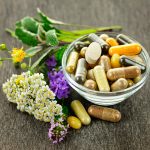
The key to losing weight sounds simple — eat less. Regardless of the diet you follow, dropping the pounds means burning more calories than you eat. That begs the question, how many calories should I eat to lose weight? According to the U.S. National Library of Medicine, for most people, cutting about 500 calories a day is a good place to start. If you can eat 500 fewer calories every day, you should lose about a pound a week. Another easy way to figure out how many calories you should eat is to multiply your weight by 15, Harvard Health advises. That number will give you the number of calories you need to maintain your current weight. To lose weight, simply cut that number. But counting calories isn’t enough, says Samantha Heller, a nutritionist at NYU Langone Health in New York City. “Everyone wants a quick fix, but weight loss is not an overnight proposition. We do not gain weight nor will we lose weight quickly,” she said. “If you want to lose 10 pounds, one important tool is keeping a food diary,” Heller said. Keep track of everything you eat for five to seven days. Then review your food record. See where you can cut back on sweets, snacks, large portions and alcohol. Let those discoveries help you make a plan for losing weight.… read on > read on >


















